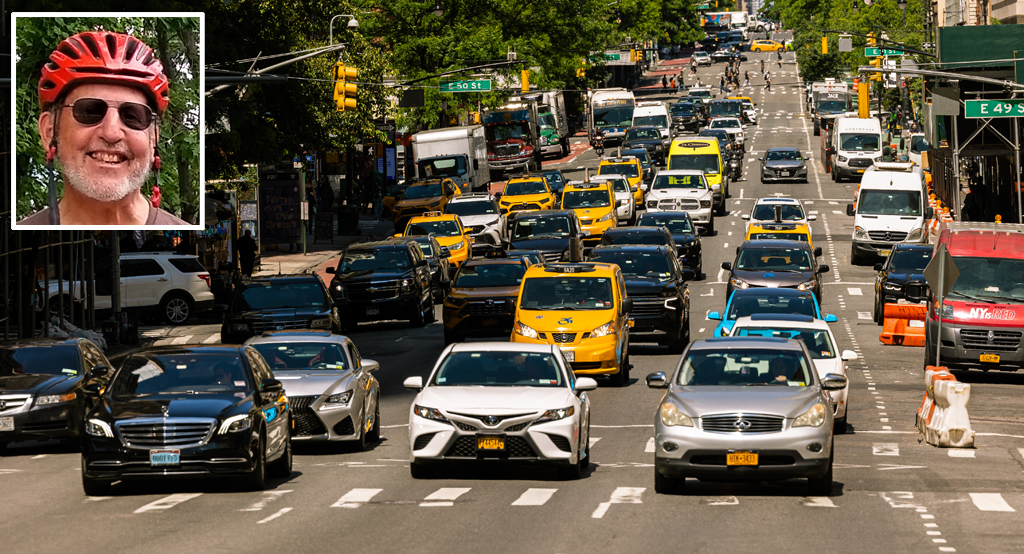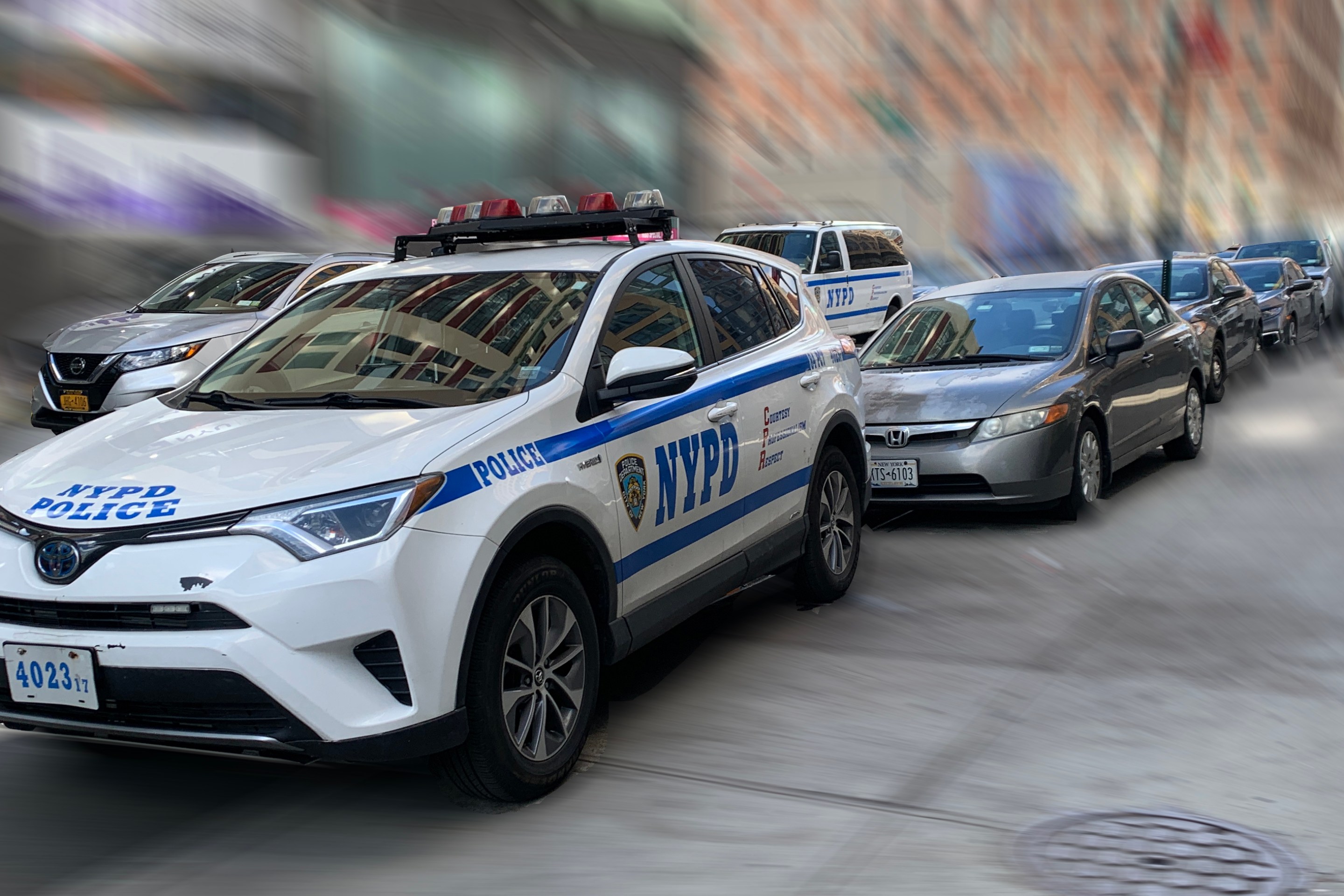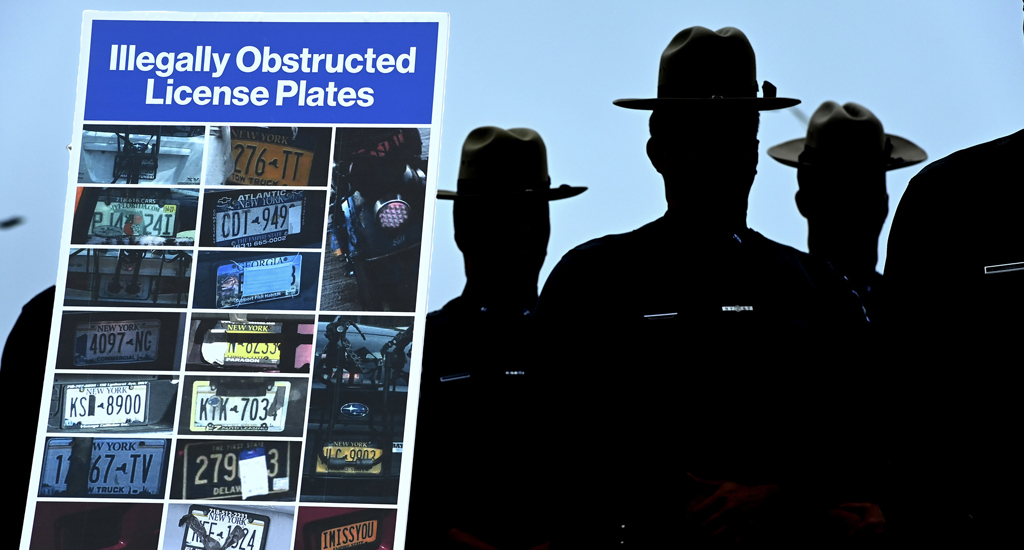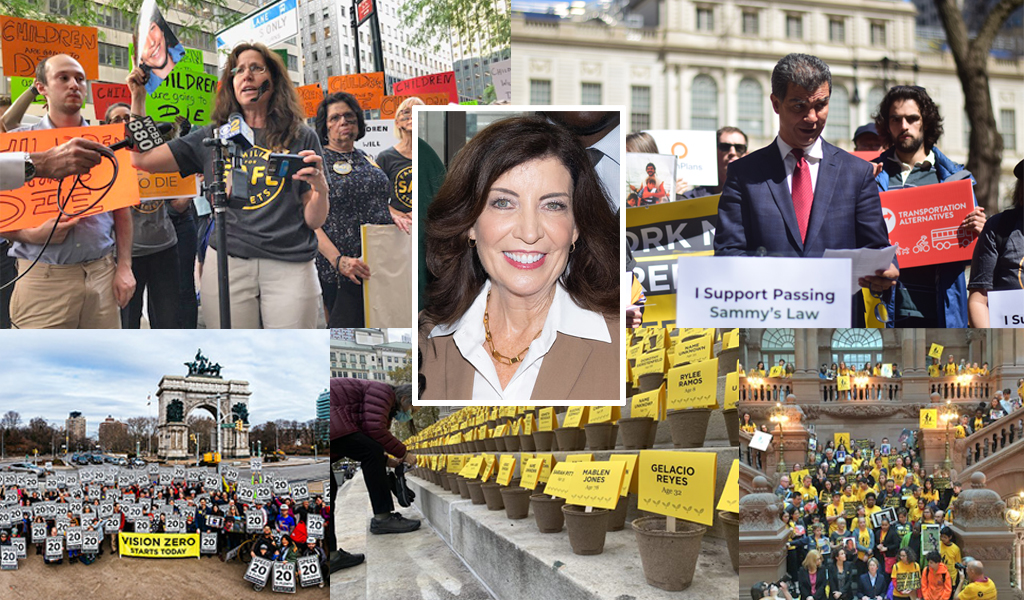We're used to seeing bizarre patterns of thinking on the Wall Street Journal's editorial pages, but an op-ed in Friday's Journal took it to a new level: “How Traffic Jams Help the Environment.”
Still more bizarrely, the author was New Yorker writer David Owen, promoter of the commonsensical idea that urban density is energy-efficient, hence big cities are green.
For some reason Owen has taken a dislike to congestion pricing, and it has led him to construct an elaborate Rube Goldberg argument to prove that congestion pricing leads to more driving:
If reducing [congestion] merely makes life easier for those who drive, then the improved traffic flow can actually increase the environmental damage done by cars, by raising overall traffic volume, encouraging sprawl and long car commutes.
What a lovely paradox … and how ridiculous, as Owen could have discovered by giving London’s congestion pricing experience (or Stockholm’s or Singapore’s) more than a cursory glance.
As any student of urban traffic now knows, London’s cordon pricing scheme cut traffic within the charging zone an average of 15 percent, raised travel speeds 30 percent, and greatly expanded bus ridership and cycle commuting — with little increase in traffic outside the zone or other negative effects. Nearly seven years on, the reasons are fairly obvious:
- Raising the price to drive into the center of London made car commuting less attractive.
- The gain in driving speeds attracted some new trips but not so many as to cancel the lost ones.
- Bus transit benefited from a virtuous cycle in which improved speeds attracted riders, further reducing traffic and also financing service improvements which attracted still more riders, further reducing traffic, etc.
- Ditto for cycling, though here the synergy was via safety in numbers.
All this was intuited back in the day by Transport for London staff, including Jay Walder, who has subsequently become the new MTA chief. The only uncertainty was the extent to which new car trips attracted by the time savings would undercut the reduction in trips from the congestion charge.
As it happened, some “induced traffic,” as Owen might have termed it, did materialize, but at far less than the one-for-one rate he assumed in his article. Without it, the drop in traffic might have been 20 percent or more. But the actual equilibrium, a settled 15 percent reduction in cordon traffic, was robust enough to achieve the desired results: faster travel by every mode, greater use of transit, and less VMT (vehicle miles traveled). Congestion pricing is indeed green.
To trace Owen’s error, look no further than his hypothesis: “If reducing [congestion] merely makes life easier for those who drive …”
Emphasis added; the “merely” is quite important. When the reduction in traffic is caused by a congestion charge, life is not just easier for those who continue driving but more costly as well. Yes, there’s a seesaw between price effects and time effects, but setting the congestion price at the right point will rebalance the system toward less driving, without harming the city's economy.
What's that right price point, then? It's not quite rocket science to figure it out, though it does take some thinking (not to mention continual tinkering if exogenous reductions in road capacity erode the original congestion benefits, as TfL reported recently). It's a subject Ted Kheel and I have in fact been thinking about for quite a while now, and if you would like to do some thinking about it too, start with our Balanced Transportation Analyzer and contact us with questions or criticisms (email: kea AT igc.org).
In his piece, Owen linked former Londoner and current MTA honcho Walder with the idea of congestion pricing. One can't help wondering whether he or the Journal intended it as a pre-emptive strike against a possible renewed push for congestion pricing in New York City.
Whatever the motivation, it’s disappointing to see a writer who has rightly urged Americans to “live closer” peddling the defeatist — and false — notion that the price of urban virtue is eternal gridlock.





